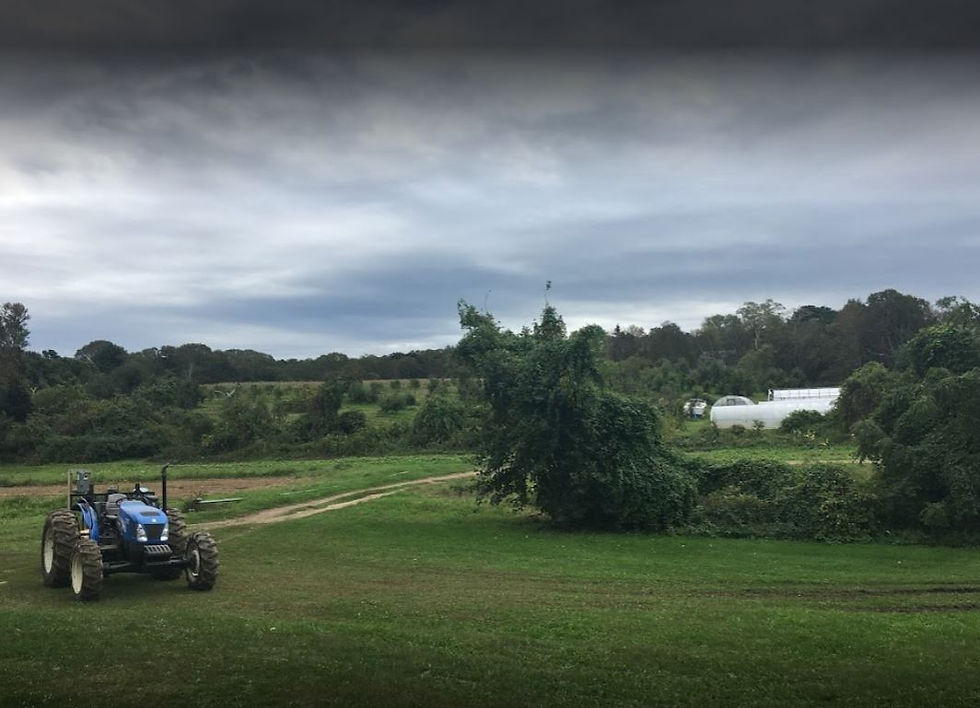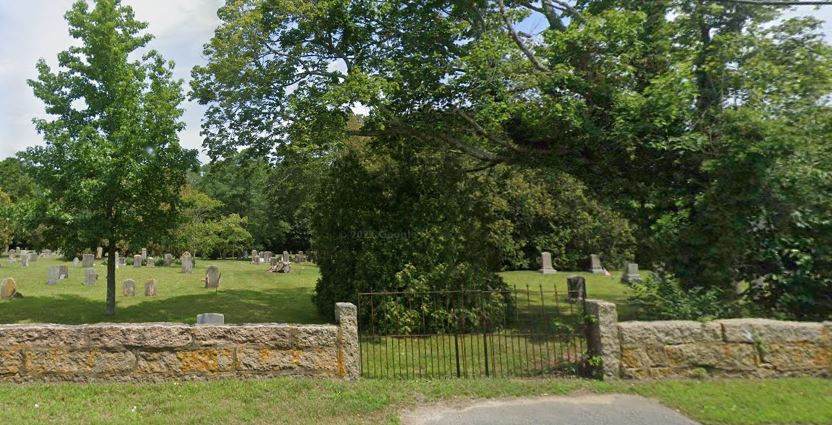The Alms House
- Kaethe Maguire
- Oct 21, 2021
- 6 min read
Updated: Aug 4
Editor’s Note: This is the first of two columns about Sandwich’s alms house.
The new American Colonies followed the British model of asking local communities to support the poor and the mentally ill with housing, food, clothing and, if possible, some form of work.
At least that was the idea.
The reality was often far short of the hoped-for care of the poor and it carried a stigma of blaming the poor for their own unfortunate circumstances. There seemed to be no allowance of kindness for a wife and children of a drunk of a husband and father who created the desperate situation.
During the first 90 years after 1637, towns kept no records of their pauper neighbors.
In 1683 the Plymouth Court ordered the selectmen of each town to “take care of the poor in their respective town ships, the town to provide for the expense.”
In 1706-07 Sandwich voted that a block of 200 acres should be set aside for the care of the poor.
Even after the separation of Bourne from Sandwich in 1884, Bourne paupers continued to reside in Sandwich, with Bourne paying for their keep.
In 1726 the town voted to establish a Poor House near the Mill River, now called Mill Creek. This would be today’s River Street. This was intended to be a brief respite house as it was only 17 feet by 13 feet, the same size as the town lockup, which was to be created 100 years later on the same spot.
The War of 1812 caused a depression across Cape Cod. In both 1817 and 1837 there were financial panics.
By 1823 the town voted to purchase “Decone Thomas Hamblen’s house and barn together with all the land adjoining the same and give him twelve hundred dollars for the same.” This is the site of the current Crow Farm and the Crowell family on both sides of Charles Street, which became known as “Poor Farm Road.”
In 1831 the farm covered 52 acres and sported four cows, but no horses.

The main Alms House building was a pre-Revolutionary War, two-story colonial 34 feet long and 28 feet deep. By 1829, a needed extension of 18 by 28 feet was added and a full cellar was dug. By 1868, two ells of two stories each were added on as well. Eleanor Crowell Winslow’s house at 24 Charles Street now sits on this site.
By 1876, 177 “tramps” passed through the town, necessitating some form of lodging. In 1878 the “Murphy House” was moved to the spot and tied to the existing structure. This became the “Tramp House.” It accommodated drifting men who would only stay for a brief period but needed a place to sleep.
Following the Civil War there were many homeless men wandering the roads. Where the women were, I do not know. According to The Independent, a Sandwich weekly, seven “tramps” was the highest number the house could accommodate on a single night. The cost was not to exceed 12 cents for their food and lodging.
At that time the cost of an Alms House inmate was about $2.29 per week. Food that was not raised had to be purchased. The Old Colony Rail Road provided transportation of a half barrel of mackerel from Provincetown, for example.
Before the presence of the Boston and Sandwich Glass Factory (1825), the whole place was heated by the many adjacent wood lots. Later they used coal bought from the glass works for fuel.
The keeper lived with the poor in the same structure. Somehow the keeper’s wife cooked for all. A Mrs. Lawrence actually continued on alone when her husband died in 1845.
Since they were already on farmland, the poor were expected to work the farm if at all able. As early as 1829 the town bought additional farmland from the Chipman family. The Alms House sold food from their farm to the people of the town.
In 1846 there were 113 Alms Houses in the state, 12 of which were in Barnstable County. The Sandwich Observer of January 16, 1847 reported that “nearly one half of the whole number of Paupers were probably made so by intemperance in themselves and others.” At this time there was a large temperance movement all over the country.
PART 2 - Published in the Sandwich Enterprise October 29, 2021
Not all residents were hard-hearted and blamed the poor for their condition in life. Jonathan Nye of New Bedford, a former Sandwich resident and owner of 24 whaling ships, annually supplied the Alms House residents with Thanksgiving dinner.
In 1867, Joshua G. Battles caught and salted five barrels of herring for the Alms House at 55 cents per barrel. He also caught 52 barrels for the Native Americans at 20 cents a barrel.
From the very beginning land was set aside for a burial ground.
Sadly, there were not records kept of the names of those buried there. However, Carolyn Crowell of 33 Charles Street, living in her parents’ 1923 home, has done much to raise the awareness of this abandoned and forgotten burial ground. A large stone now marks the spot. This was placed by our department of public works in June of 2011.

According to Ms. Crowell there were other burials on adjacent property, now owned by the Town of Sandwich, in that same area as late as 1915. The Alms House burial ground that closed in 1845 did so because of the rocky land that made it so difficult to dig graves. There was a wooden fence, created in 1915, on the second site that was visible as late as the 1970s, but it soon eroded and fell.
It was this disregard for the poor that caused Ms. Crowell to call attention to this unmarked burial area.
In 1844, the town reserved an area of Mt. Hope Burial Ground for the poor in the vicinity of Route 6A.

Eventually the care of the mentally ill became an obvious need but it led to a lack of safety for the residents of the Alms House. There was no easy solution for anyone anywhere and it resulted in the terrible imprisonment of the mentally ill in attics or in locked rooms where a caretaker was paid to keep that person segregated.
There was a “lunatic hospital” in Taunton, but the hospital wanted the incurables to be placed in alms houses.
After 1875, the law prohibited housing children in the Alms House. The thought was not to expose children to the “taint of pauperism.” Also, they sought to separate out the mentally ill. Poverty was associated with laziness and moral deficiency.
Carolyn Crowell’s uncle, Leavitt Crowell, has left written memories of growing up in the area and told the story of finding metal loops, chains and bolts in the foundation of the Alms House. Sadly, these were used to chain the mentally ill. Leavitt removed some of this metal as a young boy and melted it down to make metal soldiers.
He also tells us that there was a spring on the spot that held three to four feet of water at all times. A lead pipe for water for the Alms House was attached. This area has now dried up. There had been a sign saying “Water Hole” on the spot.
The 1889 state report of Lunacy and Charity of Massachusetts states that by this time, “the Alms House is in poor condition, though not owning to a lack of interest on the part of the superintendent or matron, but because the building is old and now adapted to the use for which it is put.” They reported the building should be closed if they cannot immediately provide a bathroom.
On April 22, 1890, the Sandwich Alms House was found to be “old, poorly arranged, out of repair and yet the inmates were tidy and the house ‘scrupulously’ clean. However, 13 of the 17 inmates are insane. Five of these inmates are from the town of Bourne.”
By 1908, attempts were made to rearrange the Alms House to better accommodate the inmates. Also, the farm was put up for sale. Proceeds were to be applied to the town debt.
The Alms House eventually burned down. Unfortunately, I did not find any information on any details of this event.
In 1912 the town decided to sell the farm at auction for not less than $2,000. By then it was about 27 acres. Henry Belcher of Randolph purchased the farm for $2,325.
Mr. Belcher began to build a home on a high hill and then changed his mind and decided he preferred the corner of Tupper Road and Main Street (127 Main Street). He used the foundation of the Alms House to build a house for a hired man and then decided to sell.
David and Lincoln Crowell purchased the farm in 1916 and the rest is history, as they say.
Kaethe Maguire is a member of the Friends of the Sandwich Town Archives, a dedicated, all-volunteer, 501(c)(3) nonprofit committed to supporting and promoting the archives’ collections and the rich, diverse history of the town of Sandwich.





Comments